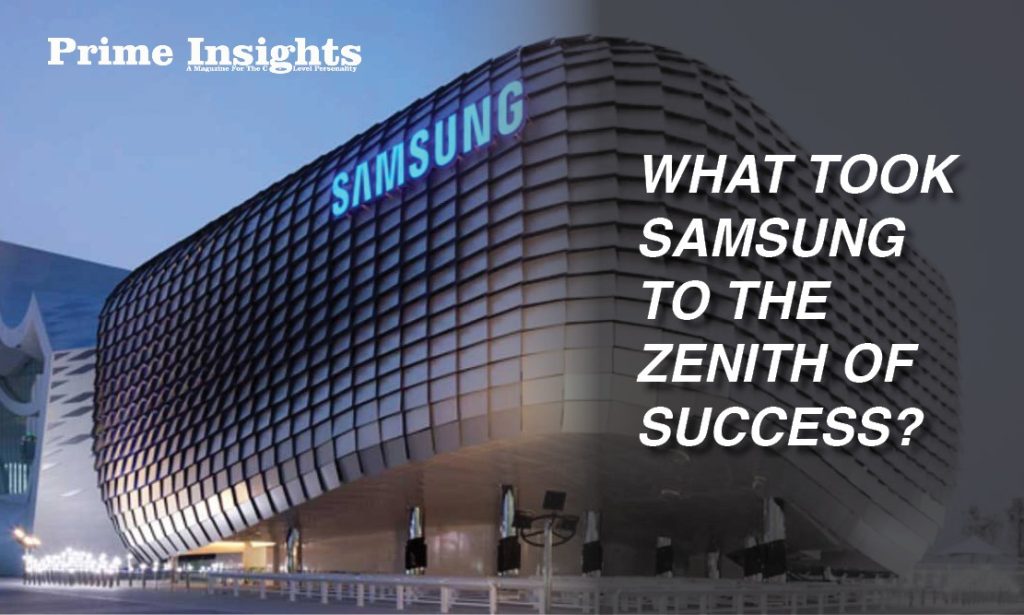SAMSUNG
A South Korean multinational conglomerate, headquartered in Samsung Town, Seoul, Samsung comprises numerous affiliated businesses, most of them being under its self-brand and making it the largest South Korean conglomerate. It was founded by Lee Byung-Chul in 1938 as a mere trading company but gradually it acquired a huge market base and its core channels diversified into food processing, textiles, securities, insurance and retail. Later in the 1960s, it entered the electronics industry and then into the shipbuilding and construction industries which resulted in its slow but consistent growth over years.
The short steps to the big stage
When Samsung was founded, Korea was under the rule of the Japanese and this made Lee believe and see it as an opportunity to succeed. He began to export items to other countries from his region and then in the next two decades, Samsung entered into the sugar refining business. The construction, petrochemicals and ship-building were introduced later. When Samsung made its step into the electronics retail industry, its success followed without any hassles. It first produced a monochrome TV model in 1969 and then slowly captured the Korean electronics market in the next 2 to 3 years. To enlarge its field of prospects, it began developing a wide range of products including phones, computers, etc. Samsung was gradually recognized in the public market as a global technology-based consumer brand with a range of consumer electronics, telecommunications and home appliances.
The sudden breakdown and step-up
Samsung’s founder Lee Byung-Chul suddenly passed away in 1987 and then Samsung got diversified into 4 different groups and they were- CJ Group, Hansol Group, Shinsegae Group and Samsung Group. Each of them now got separate responsibilities to undertake and manage business an s a while. Out of them, the largest group was the fourth one which was responsible for the majority of business including electronics, engineering, and financial service sectors. The Shinsegae Group was involved in retail and departmental stores whereas the CJ Group dealt with food and entertainment products. The remaining group focused on telecommunications and media business. Thus, it was strategically planned and Samsung never backed out even with the demise of its founding pillar.
Some of its smart acquisitions-
- SmartThings in 2014
- LoopPay in 2015
- Joyent in 2016
- Harman International in 2017 and
- Dacor in 2016
- Heartiest contributions behind the consistency of the brand
South Korea’s GDP
Being the largest and most powerful company in South Korea, Samsung has always played a dominant role in the economic growth of the country. As per a survey by Korean International Trade Association, the brand export revenue accounts for around 20% of the 2020 gross GDP. It made a vibrant impact on the country’s economy through the provision of major employment and the creation of a workforce of more than 30K people in that country alone. Through further research and development, Samsung helped in tech-driven innovation in the field of tech-based industries in the entire country.
To Burj Khalifa
A subsidiary of this brand named Samsung C & T Corporation was the chief contractor for the construction of this talent building in the world so far. The building’s foundations and superstructure were majorly contributed by Samsung alone. This also included the building business elevators and central conditioning systems. While facing numerous challenges and hurdles, Samsung continued to aid the construction and developed newer technologies to deal with the country’s extreme heat and high winds, so that the logistic structure stands erect as it is. Thus, Burj Khalifa became a testimonial of Samsung’s engineering base.
Some astonishing facts
Today, Samsung is the largest manufacturer of smart mobile phones and TVs globally with its excellent market base in semiconductor and home appliance markets too.
Its R&D group is one the biggest sustainable and well-formed group in the world with core concept and depth that set and accomplishes ambitious goals for the brand.
It has a diverse workforce with employees from over 80 different countries around the globe
It also supports philanthropy by sending funds to charitable trusts through its corporate social responsibility program.

